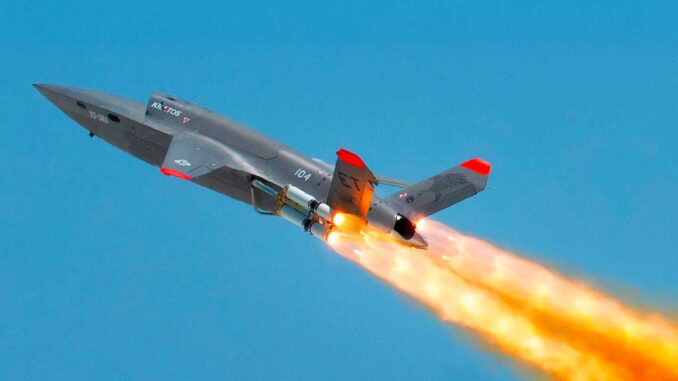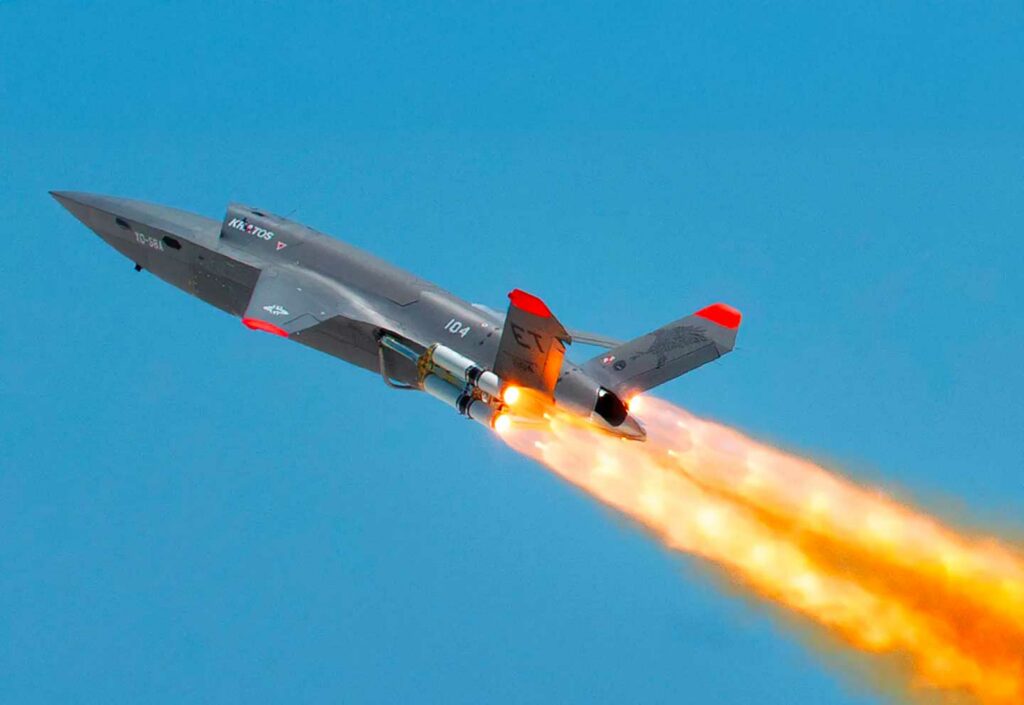
The XQ-58A Valkyrie could be in service with the Luftwaffe by 2029 thanks to a partnership between Airbus and Kratos, with potential sales across Europe.
The XQ-58A Valkyrie stealth drone, designed by Kratos and operated in the United States, is set to be adapted for the European market as part of an industrial cooperation agreement with Airbus Defense and Space. The objective is clear: to provide Germany—and other European countries—with a Collaborative Combat Aircraft (CCA) drone capable of accompanying piloted fighter jets on a variety of missions. This partnership involves specific technological integration by Airbus, with an open, modular, and interoperable mission system. The aircraft would be operational for the Luftwaffe in 2029. This initiative comes at a time of strategic rearmament in Europe in response to growing tensions in the East. Alongside the Franco-German FCAS program, which is still a long way off, the Valkyrie could fill an operational gap by the end of the decade.
An American drone modified for European needs
The partnership signed between Airbus Defense and Space and Kratos Defense and Security Solutions aims to adapt the XQ-58A Valkyrie to the European operational context. Originally developed for the US Air Force as part of research into “loyal wingman” stealth drones, the Valkyrie is approximately 8.5 meters long with a wingspan of 6.7 meters and can reach speeds of 1,050 km/h. Its takeoff weight exceeds 2,700 kg.
As part of this partnership, Airbus will develop a “agnostic” mission architecture, i.e. compatible with different types of platforms. The aim is to offer a modular and reusable system, enabling better interoperability between drones and piloted aircraft. Airbus has not yet disclosed the estimated unit cost of the European version of the Valkyrie, but in the United States, the initial model is estimated at €6 million, well below the cost of a fifth-generation fighter jet.
This adaptation is part of a strategy to accelerate the entry into service of an operational drone in Europe, without waiting for the FCAS, which is scheduled to enter service after 2040. The Valkyrie could be a transitional but fully operational solution for the Luftwaffe.
A response to the growing demand for collaborative combat drones
The Collaborative Combat Aircraft (CCA) concept is based on close integration between fighter jets and drones. The XQ-58A falls precisely into this category. It is designed to fly alongside piloted fighter jets, performing various functions: target designation, electronic warfare, radar jamming, and precision strikes.
Germany has expressed particular interest in this type of capability, notably to support its future Eurofighter EK, the electronic warfare version of the Typhoon. Airbus has not confirmed whether the Valkyrie will be assigned to this program, but functional compatibility between the two platforms is technically feasible. The drone could also cooperate with the future F-35As ordered by the Luftwaffe.
The concept of dispersed operations is also reinforced by the Valkyrie’s launch mode: it requires no runway, being powered by a rampa or mobile trolley. This paves the way for launches from remote areas or containers, with piloted fighters joining the mission from the rear.

Towards large-scale European deployment
Airbus expects the modified version of the Valkyrie to be ready by 2029, but the potential extends far beyond Germany. Several NATO countries are looking for more affordable solutions to compensate for the erosion of their air assets. The drone’s low cost, combined with its ability to work in swarms with piloted aircraft, is a strong argument in its favor.
The XQ-58A was not selected by the US Air Force in the first phase of the CCA program, but its development is continuing for the US Marine Corps, notably in a version dedicated to electronic warfare. This proven expertise could reassure European countries about its operational maturity.
Europe has few immediate alternatives. The Barracuda demonstrator, developed by Airbus since 2003, never made it to operational status. As for the Wingman, Airbus’s own drone concept, it is not expected to be ready before the 2030s, with major budgetary uncertainty.
A strategic capability in the face of tensions in the East
The geopolitical context is a key factor in this decision. Since 2022, European countries have been stepping up initiatives to strengthen their military resilience in the face of threats from the East. Thanks to its stealth and ability to operate in a dispersed manner, the Valkyrie offers a concrete response to the anti-access/area denial strategies implemented by Russia.
European air forces, which have long been dependent on heavy and costly systems, are now seeking to increase their combat mass at a lower cost. In this sense, the Valkyrie could become a standard capability for several air forces, particularly in Central and Eastern Europe.
However, the adoption of an American drone modified by Airbus raises questions about strategic autonomy. This choice reflects European industrial pragmatism, which favors rapid operational availability over technological independence.
The Airbus-Kratos collaboration on the XQ-58A Valkyrie could mark a turning point in the structuring of European air forces. The drone offers immediate operational capability that is adaptable and economically viable. If the initiative comes to fruition, Europe would finally have a credible loyal wingman drone system, pending the hypothetical arrival of the FCAS.
War Wings Daily is an independant magazine.